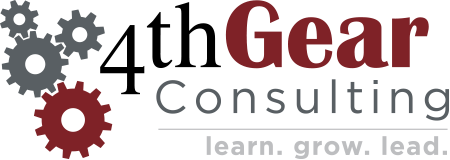This post was originally published on Collective Matters on March 19th, 2014.
There is a common theme that we see in organizations today. Change. Change is hard. Change is constant. We change too much. We change too fast. We don’t leave time for one change to stick before we change it again…..Sound familiar?
These days, so much of what employees are concerned with is what they perceive as the pace of change. They feel like changes are always happening, they cannot keep up with the pace, and they eventually lose sight of the vision for change in the first place. More times than not, employees feel the change burn-out because we as leaders forget to be the change we want to see. Instead, we often get caught up in creating new policies and procedures, implementing new and improved forms, or changing meeting times to magically make them more effective; all in an effort to increase compliance with the new task. Unfortunately, no amount of software upgrades, new processes, or additional meetings will ever compensate for what truly needs to be different; how your organization leads change.
In order to effectively lead change, organizations need to understand why people resist change in the first place, and then ensure their leaders are equipped with the capability, and a plan, to lead individuals and teams through the change. By understanding how human behavior shifts and using that knowledge to build and execute an effective plan for change, organizations can reduce resistance and build committed teams that have shared vision and a self-sustaining culture of growth, innovation, and accountability.
So what are the reasons people resist change? There are four actually.
#1. They don’t want to change! Organizational change is hard because individual change is hard. And if people don’t want to change, they won’t. So the first step is to define the change for your leaders and team. Connect them to the vision behind the desired change and their individual goals as well. In order to align people toward a vision, it has to be collaborative, meaning you cannot define the vision alone. It has to be clear, and it has to compel people to want to follow it.
#2. They don’t know how to change. Human behavior is made up of habits and patterns that we have had years upon years to practice and perfect. It is not as simple as telling someone how to change to see a shift in behavior. True behavior change takes time, commitment, coaching, and practice. It is critical that the behavior of your leaders align how they lead with the desired behavior change in order to model for the rest of the organization. If a manager says she wants open, candid discussions from everyone, yet shoots the messenger when she gets bad news, she won’t get honesty, no matter how many times she asks for it.
#3. They don’t think they can change. This can be narrowed down to confidence, in themselves, the organization, and in their leader. Does the organization have the necessary tools for change to be successful? Do employees believe leadership will stick with the change and see it through? Does the staff have the capabilities to correctly implement the change? These types of doubts often cause people to shy away from trying something new.
#4. Others around them aren’t changing. Group dynamics are very compelling towards defining the culture in your business. People will resist change if they don’t see others around them making a shift either. There is a lot of risk in going first. If you can get enough momentum for change by involving people from the start, setting a clear vision, and committing to the change yourself, then people are much more likely to follow. Once change begins, it becomes more about supporting each other and growing as a team through the change process.
Only after understanding the reasons individuals and groups resist change can a leader make the choice to lead a different way. There may have been a time when it was okay to lead employees towards change with verbal instruction, written instruction, new forms, and added policies but we don’t live there anymore. Employees must adapt to changing market conditions, make faster decisions, innovate, and implement new technology. In this kind of world, change is more complex and requires commitment to happen, not just compliance to last beyond the next meeting. Only when a leader chooses to lead through influence will he or she gain the momentum and commitment to truly sustain change. Influence allows organizational leaders to take a change-fatigued team past the point of resistance, past task compliance, and all the way to commitment by simply shifting the manner in which they lead.
Leading Through Influence
We develop better leaders so they can build a better future. Contact Us to learn about leader development via our training, workshops and executive coaching.


